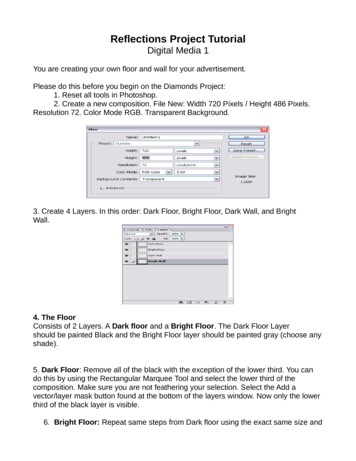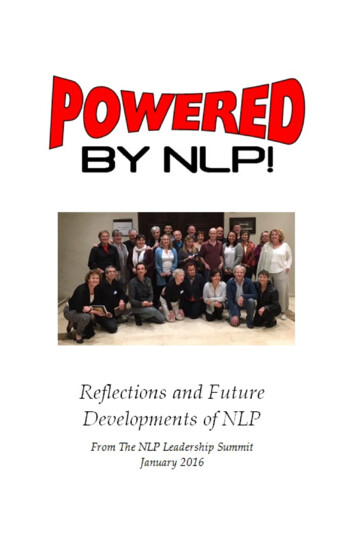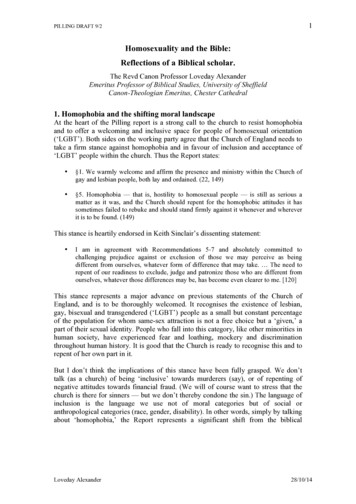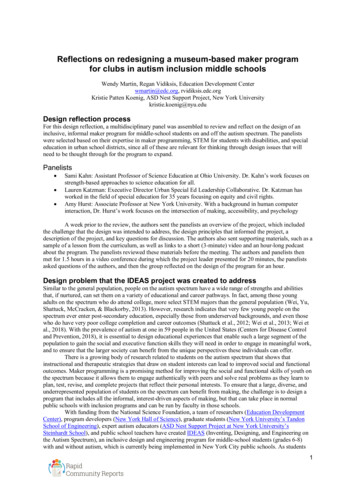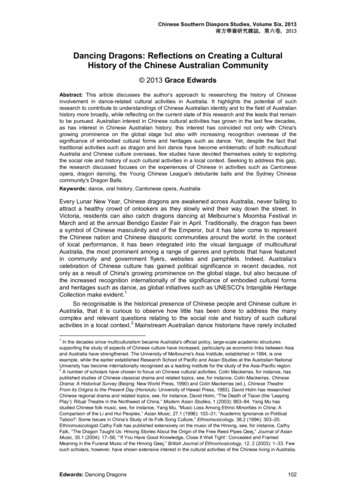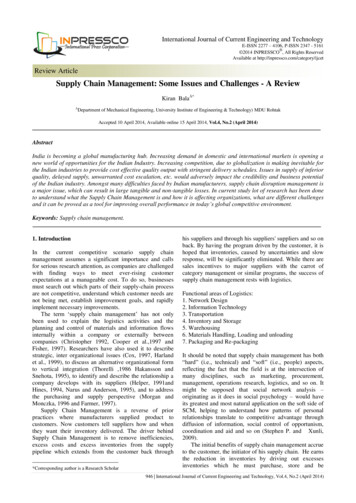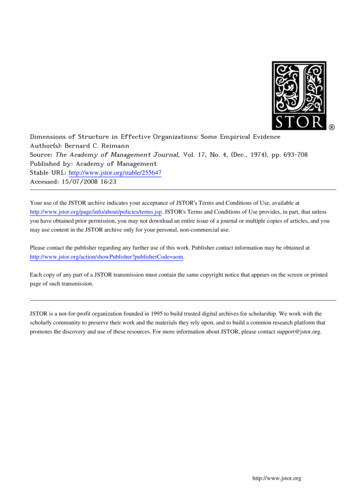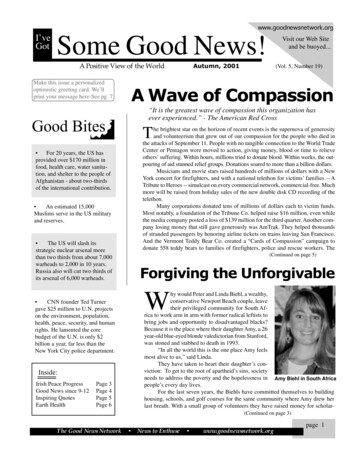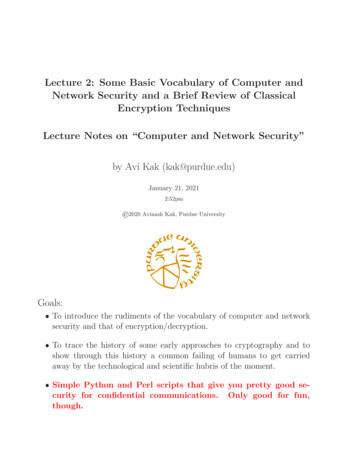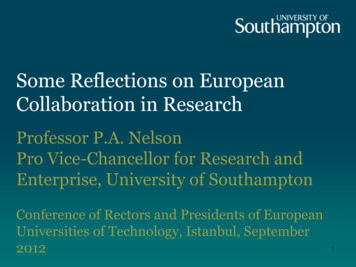
Transcription
Some Reflections on EuropeanCollaboration in ResearchProfessor P.A. NelsonPro Vice-Chancellor for Research andEnterprise, University of SouthamptonConference of Rectors and Presidents of EuropeanUniversities of Technology, Istanbul, September20121
University of Southampton Member of the Russell Group ofresearch-intensive UK universities Ranked in top ten in the RussellGroup for research quality Annual turnover approaching 450m More than 22,000 students and5,000 staff 73rd in QS world rankings 2012 Strong culture of enterprise,innovation and partnership working
Examples of Partners
Partnership with Lloyd’s Register:A New Maritime Institute 116M ( 135M) agreement New building complex on University campus A joint institute combining staff from Lloyd’s Register and theUniversity of Southampton. Approximately 400 staff from Lloyd’s Register and 400 stafffrom the University Not just for the University and Lloyd’s Register – a centre andfocus for the regional and global maritime industry
FP7 at Southampton Ranked 17th of all HEIs for number of FP7 participations(Fourth FP7 Monitoring Report) Ranked 9th HEI within UK for research income from EUgovernment (HESE 2010-2011). Growing PI recognition of the opportunities and benefits ofFP7 funding. Increasing year on year engagement of PIsacross broader range of disciplines 244 projects (active/negotiation) across 4 pillars, plus JTIs,incl. 13 ERC Projects.5
Income from EU Government ( k)- Top 20 HEIs in the UK (2010-11)2007-08 to 2010-11:EU Gov't Income k350003000015000100001136420000Southamptonranked 9th in2010/118345250002010/11( k)2009/10( k)2008/09( k)50000Source: HESA finance return (table 5b, column 6)6
Income from EU Government bodies (%)2002-03 to 2010-11:Framework Programme 6Framework 8,343)2009/10(95,572)2010/11(93,223)Year and (Total Income from Research Grants Contracts k)% Other Sources% EUSource: HESA finance return (table 5b, column 6)7
FP7 Cooperation – number of projects8
Aviation Noise Research NetworkNetwork active since 1998 through X-Noise, X2-Noise and X3Noise Coordination Action projects supported by EU funding.Extended work-programme now in place for 2011 - 2014 period(X-Noise EV)Definition &Assessment ofResearchStrategiesDissemination &CommunicationResearch CommunityNetwork
X-Noise Network 1998-2014ResearchCommunityNetworkDefinition &Assessmentof ResearchStrategiesThree-PillarApproachAnnual ed onalProgrammesJet onNational & RegionalFocal Points NetworkNetworkInformationSystem Expert Committees(Technology, Impacts,Scientific) Network of National andRegionalFocal Points (FPs) Brainstorming/StakeholderSeminars (by invitation) Open Annual ScientificWorkshops(co-organized with CEAS) Annual Full NetworkMeeting(with Committee membersand FPs) Local/regional events(organized by FPs) Internal calls for new ideasAnnual ScientificWorkshopDissemination ationof TrainingNeeds
Silence(R): power-plantnoise reduction technologiesTreatedPlug
Silence(R): airframenoise reduction technologiesLANDING GEAR:- Add-on Treatment- Low Noise DesignHIGH LIFTDEVICES:- Add-on Treatment- Low Noise Design
FP7 SST - FOUL-X-SPEL project–Environmentally Friendly Antifouling Technology to Optimise the EnergyEfficiency of Ships (10 partners, December 2011 – November 2014)Marine biofouling is the accumulation of biological material on underwatersurfaces, which has plagued both commercial and naval fleets: The research concerns the modification of hull coatings, by covalently fixingbioactive molecules providing a non-leaching biocide activity, thus promotinglong-term surface protection. The new surface coating technology will minimize the surface roughness andimprove ship hydrodynamic performance.
4 PI SKY:Extreme astrophysics with revolutionary radio telescopes 3 M Euro ERC grant (ProfRob Fender, Astronomy) Goal is to bring together anew generation of radiotelescopes across the globeinto an automated networkfor the detection oftransient and explosiveastrophysical eventsLOFARSKA-SASKAAus14
PHASORS The PHASORS project targeted the development and applications offibre based phase sensitive amplifier (PSA) technology in 40Gbit/sbroadband core networks Demonstration of enhanced optical data transmission systems usingPSA technology – higher capacities, extended reach, longer amplifierspans etc. Extremely successful project: achieving all project objectives (andmore), and described by the EU as the model project.15
MICROFLEXMicrotechnology in Smart Fabrics EU FP 7 funded Large Scale IP coordinatedby SouthamptonIR imageof aprintedtextileheater 4 Year project, 7.7 M Budget 13 Partners,9 countries. Objective: develop printed microsystemson fabrics to realise e-textiles. New functional inks developed (e.g.piezoelectric, electroluminescent). Developed a process for realising 3Dstructures e.g. micropump.Flexible printed micropump on Kapton Some inks commercially available throughSmart Fabric Inks Ltd. (Southampton spinPiezoelectric off).element onfabric
Horizon 2020 proposals ( m )Priority 1. Excellent scienceEuropean Research CouncilFrontier research by the best individual teamsFuture and Emerging TechnologiesCollaborative research to open new fields of innovationMarie Curie actionsOpportunities for training and career developmentResearch infrastructures (including e-infrastructure)Ensuring access to world-class facilitiesPriority 2. Industrial leadershipLeadership in enabling and industrial technologies (ICT,nanotechnologies, materials, biotechnology,manufacturing, space)Access to risk financeLeveraging private finance and venture capital forresearch and innovationInnovation in SMEsFostering all forms of innovation in all types of SMEs13 2683 1005 5722 47813 7813 538619 complemented by6 82917
Horizon 2020 proposals ( m)Priority 3. Societal challengesHealth, demographic change and wellbeing8 033Food security, sustainable agriculture, marine and maritimeresearch & the bioeconomySecure, clean and efficient energy*4 152Smart, green and integrated transport6 802Climate action, resource efficiency and raw materials3 160Inclusive, innovative and secure societies3 819Role of the EIT and JRC in Horizon 2020European Institute Technology (EIT)Combining research, innovation & training in knowledge andInnovation CommunitiesJoint Research Centre (JRC)**Providing a robust, evidence base for EU policies5 7821 360 1 440*1 96218
Engagement in H2020 Welcome continuation of ERC and expansion of FET, needfocus on excellence. Strong expertise in each of the societal challenges– Implementation of more open topics Strong expertise in ‘Key Enabling Technologies’ areas inparticular ICT, Nanotechnologies, Biotechnology and Space– Implementation and accessibility? Synergy with structural funds?19
H2020 concerns Long term financial sustainability– FP7 Southampton used ‘simplified indirect’ – closer tomeeting our full economic cost (FEC) than FP6, but stilla shortfall– H2020 – even at 100% reimbursement rate andinclusion of VAT, the 100 20% model will recover lessof our costs Exclusion – loss of access to excellence– H2020 finance model likely to prevent us fromparticipation in projects at 100% reimbursement.20
Conclusions The University of Southampton is an enthusiasticparticipant in EU research programmes and will continueto be so. We welcome the prospect of Horizon 2020, but have someconcerns regarding the financial models proposed.21
MICROFLEX Microtechnology in Smart Fabrics EU FP 7 funded Large Scale IP coordinated by Southampton 4 Year project, 7.7 M Budget 13 Partners, 9 countries. Objective: develop printed microsystems on fabrics to realise e-textiles. New functional
